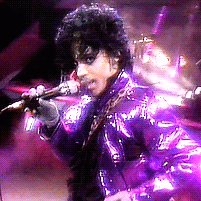DQuinn1575 wrote:Quotatious wrote:Leaning heavily towards Gilmore here. I'll have to take a closer look at his defensive impact in the NBA (he missed almost a half of the 79-80 season with a knee injury, which may have limited his mobility a bit), because at first glance, it seems somewhat questionable (considering that Chicago had really poor defensive teams after 1977 - in the 76-77 season, they had the second best defense in the league, during A-Train's first season there, but after that, just 20th of 22, 16th of 22, 15th of 22 even with Gilmore out for half a season in 79-80, 14th of 23, and finally 17th of 23 in 1982), and then in San Antonio, he didn't seem to anchor good defensive teams - just 15th of 23 in 1983, then 21st of 23, and 17th of 23 in both 1985 and 1986.
Anyway, Artis may just fall into the same category as peak Ewing (Knicks finished just 13th in DRtg in 1990, and 12th in 1991), or KG in Minnesota, where his teams were just about average defensively, except for 2004. May be as simple as playing on weak teams, which didn't allow them to give as much effort defensively as they otherwise would have given, if they had good teams around them.
Still, Gilmore's ABA defensive impact is irrefutable - he anchored the best (three times) or the second best (two times) defense in the ABA in each of his five seasons.
Gilmore's numbers and longevity, combined with his defensive impact during his first six pro seasons, IMO makes him as good a candidate as you can have at this point in the project.
Gilmore was the only center in the gosh darn league when he was in the ABA - an over-the-hill and never great
Zelmo Beaty was the league's 2nd best center.
He was barely in the Top 10 players in the NBA at any time -
Before his last season at age 38 in Boston - He won 2 playoff series
One was a 2-0 series
The other he was 4th on his team in minutes played.
Only elite center perhaps. Beatty pretty clearly wasn't over the hill in Gilmore's first year. Then there's Daniels a first round pick in the NBA who choose to go to the ABA (and two time ABA MVP albeit a weak one at a time the the C position more genuinely was weak). By the time those two are dropping off (and before there plenty of guys who didn't destroy the ABA but nonetheless managed productive years in the ABA (very young) Moses, Dan Issel (mostly as a teammate), Caldwell Jones, Swen Nater, Billy Paultz, Jim Chones, Dave Robisch and Tom Owens. That's not counting bigs who played some C like Maurice Lucas. It's clearly not the same as the NBA for centers at that time, but it isn't bereft of bigs who are at least competent NBA players.
His first year in the NBA was at age 27 and has 5 NBA top ten WS/48 (1 peripheral i.e. 8th, 9th or 10th); 7 top ten NBA WS seasons (2 peripheral), 5 top ten PER seasons (2 peripheral) . WARP too, whilst not fully available, (what we have) suggests he aged reasonably well http://www.basketballprospectus.com/unfiltered/?p=728.
Then too there's problems with the "didn't win series" reasoning. Which series should he have won and why? Should he have refused to play for the Bulls (a powerhouse in the early 70s, but by '76 the worst team in the league, hence getting the first pick in the dispersal draft)? I didn't know the '83 WCSF minutes numbers were out there but in any case the "fourth in minutes" is a nonsense. All 5 starters are within 39 minutes of one another over the totality of the playoffs (11 games, or within 3.5454 mpg of one another; the gap being smaller if you remove slight outlier Gervin). Then you look at how 3 of the four wins in their winning series were blowouts (by 19, 17 and 40) and the minutes tells us pretty much nothing.
Then highlighting a short series when you're then one creating this arbitrary measure of playoff series wins.

























